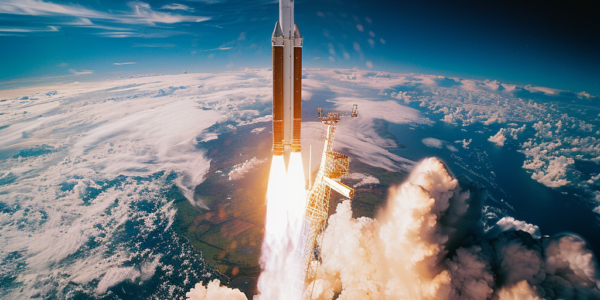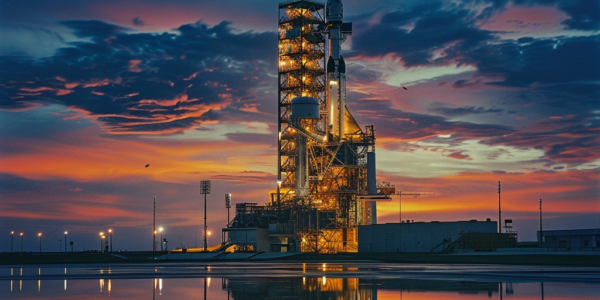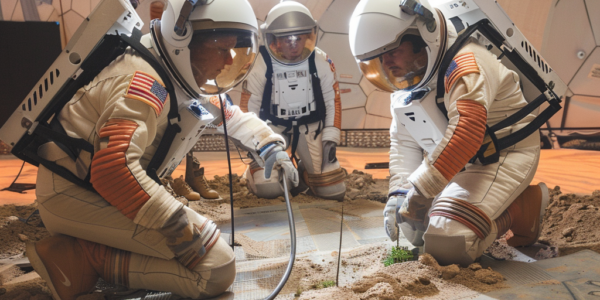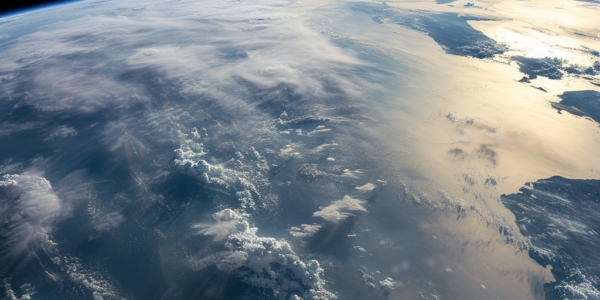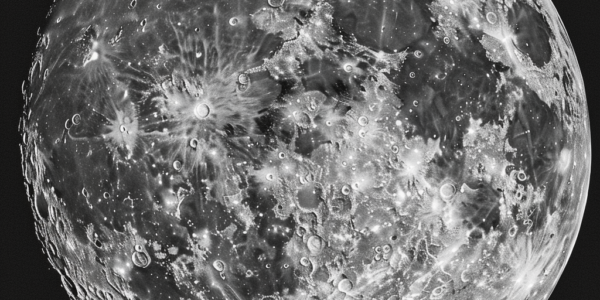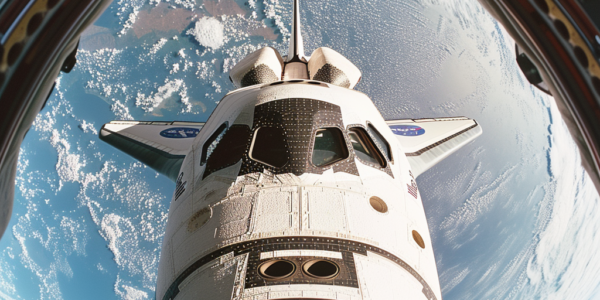NASA Captures Image of Strong Solar Flare
The Sun emitted a strong solar flare on Feb. 16, 2024, captured by NASA’s Solar Dynamics Observatory. Solar flares can impact communication, power grids, and spacecraft. This X2.5 flare is classified as one of the most intense, highlighting the importance of monitoring space weather. Visit NOAA’s Space Weather Prediction Center for forecasts and alerts.
NASA’s Europa Clipper to Search for Extraterrestrial Life on Jupiter’s Moon
NASA is launching the Europa Clipper on a mission to study Jupiter’s moon Europa, one of the most promising places to search for extraterrestrial life in the solar system. The mission will analyze the moon’s vast saltwater ocean and cracked ice surface to determine whether it could support life, marking a significant step in the search for life beyond Earth.
NASA Launches PACE Satellite to Study Oceans and Atmosphere
NASA has launched the PACE satellite to study the world’s oceans and atmosphere. The satellite, which stands for Plankton, Aerosol, Cloud, Ocean Ecosystem, will spend at least three years collecting data from an orbit 676 kilometers above the Earth’s surface. Scientists expect to start receiving data within one or two months, providing an unprecedented view of our home planet.
NASA and SpaceX Delay Crew-8 Mission to Avoid Conflict with IM-1 Lunar Lander Launch
NASA and SpaceX have announced a delay in the launch of the four-person Dragon Crew-8 mission to the International Space Station (ISS) from February 22 to no earlier than February 28 to avoid potential conflict with the launch of Intuitive Machines’ IM-1 lunar lander mission. The Crew-8 Dragon Endeavour launch date will be reassessed following a successful launch of the IM-1 lunar lander, and it could be subject to further changes. This delay is part of ongoing efforts to ensure the safety and success of space missions amidst increasing interest and activity in space exploration.
NASA Seeks Applicants for Simulated Mars Surface Mission
NASA is seeking applicants for its next simulated one-year Mars surface mission, CHAPEA, to help inform plans for human exploration of the Red Planet. The mission involves a four-person volunteer crew living and working in a 3D-printed habitat, simulating challenges of a mission on Mars. Applicants must be healthy, motivated U.S. citizens or permanent residents, 30-55 years old, and proficient in English. Compensation is available for participants. These missions provide important scientific data to validate systems and develop solutions for future missions to Mars.
NASA Launches PACE Mission to Study Earth’s Microscopic Marine Life and Atmospheric Particles
NASA has launched the PACE mission to observe Earth’s microscopic marine life and atmospheric particles, aiming to provide unprecedented insights into how oceanic and atmospheric processes shape the planet. Equipped with three instruments, the mission will shed light on indicators for ocean health and global warming. PACE has the potential to continue orbiting and studying Earth for up to 10 years, joining a fleet of NASA Earth science missions to gather data on climate change.
NASA Shares Most Detailed Image of Far Side of the Moon
NASA shares stunning images of the far side of the Moon, showcasing a detailed mosaic of thousands of lunar farside images taken by the Lunar Reconnaissance Orbiter (LRO). The photo reveals the round, grey disc of the Moon, pockmarked with craters of all sizes, providing space lovers with a mesmerizing view of our universe.
Space Shuttle Challenger Embarks on STS-41B Mission
On Feb. 3, 1984, space shuttle Challenger embarked on its fourth flight, STS-41B, marking a significant milestone in space exploration. The mission included practicing tasks required for the upcoming Solar Maximum Mission satellite retrieval and repair mission, successful test flights of the Manned Maneuvering Unit (MMU) astronaut propulsion device during two untethered spacewalks, and the successful deployment of two commercial communications satellites, Westar VI and Palapa-B2. The crew for STS-41B was announced on Feb. 4, 1983, and the mission’s objectives underwent changes, ultimately including the Shuttle Pallet Satellite-01A (SPAS-01A) and practicing rendezvous maneuvers with the Integrated Rendezvous Target (IRT), an inflatable 6-foot balloon deployed from the payload bay.
JPL Announces Significant Workforce Reduction
JPL, managed by Caltech and funded by NASA, announces a significant reduction in workforce due to lower budget and lack of FY24 appropriation from Congress. Approximately 530 employees and 40 contractors will be impacted, with the aim of protecting against deeper cuts later in the fiscal year.
Canadian Space Agency Astronaut Jeremy Hansen’s Tour to Ottawa, Regina, and Moose Jaw
Canadian Space Agency astronaut Jeremy Hansen and backup astronaut Jenni Gibbons will be touring Ottawa, Regina, and Moose Jaw from February 6 to 9, 2024, discussing the upcoming Artemis II mission and engaging with students and the general public to inspire interest in space exploration and science.



